QuestionHello - We live in coastal Massachusetts and we just placed a 175 gallon pond in the wooded section of our property so that it will be ready to come to life by the spring. The pond is one of those preformed plastic shells. This part of the property has tall oak and pine trees and the tree density is somewhat low so that there is a decent amount of sunlight that makes it through the trees, but obviously there is shade as well, depending on the time of day (and the season).
I would like this pond to be as much of an ecosystem as possible, while maintaining some aesthetic appeal as well. This means i don't necessarily intend to add fish to it, although part of my question is whether a small amount of fish might be beneficial.
The naturally occurring amphibians I have spotted in the yard are the American toad, Pickerel frog, Redback salamander, one Spring Peeper sighting, and one Green frog sighting. I would love to attract or introduce Garter snakes and Eastern Painted turtles, both of which occur in the general neighborhood (or any other reptiles for that matter) but I am not sure the size of the pond or amount of sun basking opportunities will be sufficient to keep them around. I do intend to find and introduce lots of semi-shade loving plants such as ferns that I can plant close to the pond to provide for the necessary cover that small critters need. Currently the pond is lined with natural rocks of many sizes found on our property (and there are quite a few). Given that the winter is just beginning, that will be the extent of the landscaping until the spring of course.
As far as any artificial components to the pond go (other than its solid plastic liner), I intend to add a solar powered pump for some level of water circulation/filtration and some of the available pond netting for the seasons in which pine needles and or leaves fall, which I would not like to have destroy any life in it. I do of course expect some level of maintenance and upkeep.
Do you have any recommendations around which animals and/or plants to add in and/or around the pond to make it as close to a natural ecosystem as possible, and considering it is in a semi-shaded location? Or do you think adding just the right landscaping (i.e. hiding spots) and letting nature take its course is the best idea? Also, is there a way to have a few fish without completely eliminating the idea of having tadpoles grow into frogs in the same pond?
Thanks for any ideas
Burkhard
Answer"This part of the property has tall oak and pine trees and the tree density is somewhat low so that there is a decent amount of sunlight that makes it through the trees, but obviously there is shade as well, depending on the time of day (and the season)."
A lot depends on just how shady it is there.
"This means i don't necessarily intend to add fish to it, although part of my question is whether a small amount of fish might be beneficial."
Fish would help control mosquitoes but fish can also eat amphibian eggs and larvae. The smaller kinds of native fish like minnows are less apt to do that.
"The naturally occurring amphibians I have spotted in the yard are the American toad, Pickerel frog, Redback salamander, one Spring Peeper sighting, and one Green frog sighting."
They may all use your pond. Provide shallow areas and ramps to get out from branches, plastic (not natural but a plastic storage lid makes a quick ramp), etc.
"I would love to attract or introduce Garter snakes and Eastern Painted turtles, both of which occur in the general neighborhood (or any other reptiles for that matter) but I am not sure the size of the pond or amount of sun basking opportunities will be sufficient to keep them around."
Snakes found my pond, and they'll find yours. Turtles wander a little less but if you have them in your area, they should find the pond. Because it's shady and not that big, they probably wouldn't stay around too long. The turtles do need sunlight to bask.
"As far as any artificial components to the pond go (other than its solid plastic liner), I intend to add a solar powered pump for some level of water circulation/filtration and some of the available pond netting for the seasons in which pine needles and or leaves fall, which I would not like to have destroy any life in it. I do of course expect some level of maintenance and upkeep."
A solar pump may not run if it's too shady. It certainly won't run at night or on cloudy days. If you're only really interested in amphbians, they like a pond without water movement or filtration. But, such a pond will be semi-stagnant. If you can live with that, no problem. Otherwise, I suggest running a power line out if you can. What do you mean by the "destroy any life?" Are you referring to the leaves or the net?
"Do you have any recommendations around which animals and/or plants to add in and/or around the pond to make it as close to a natural ecosystem as possible, and considering it is in a semi-shaded location?"
If I had all day, I could come up with a list! Check out my site at http://www.fishpondinfo.com/plant.htm for plant lists and see which ones say they can take shade. As for animals, you can add tadpoles, snails, insect larvae, microorganisms, fish, and the list goes on. My site has info on all the pond animals too.
"Or do you think adding just the right landscaping (i.e. hiding spots) and letting nature take its course is the best idea?"
If you want a natural pond, that would suffice.
"Also, is there a way to have a few fish without completely eliminating the idea of having tadpoles grow into frogs in the same pond?"
Absolutely! You have to choose the right fish. Almost any fish will eat treefrog eggs so if you want those frogs, forgo the fish. Rosy red minnows, fathead minnows, dace, darters, and other small native fish will not eat most amphibian eggs or larvae. The non-native goldfish, koi, orfe, tropical fish, and others will eat amphibian eggs and tadpoles as well as the native mosquito fish (who will only eat the smaller eggs and larvae), sunfish, and any "game fish."
Good luck!
Robyn
fishpondinfo.com

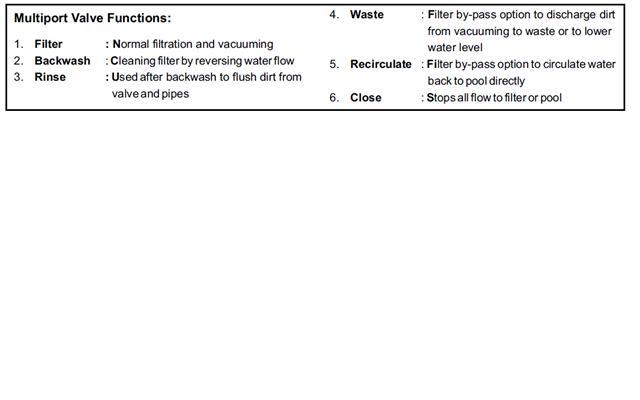 pond trouble
QuestionMe and my husband just bought a home with a pon
pond trouble
QuestionMe and my husband just bought a home with a pon
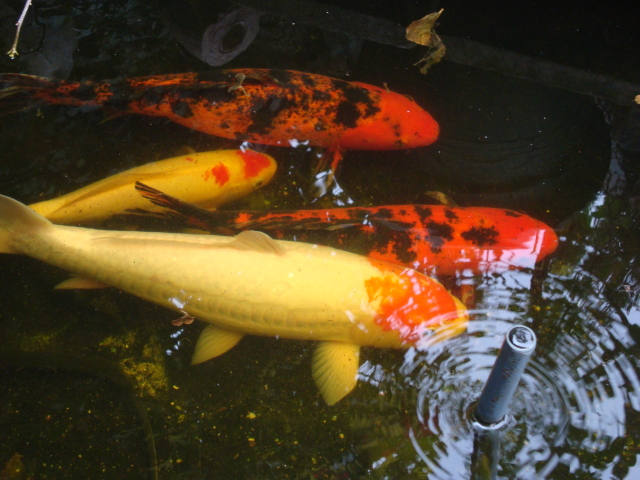 Identifying my pond fish
Question
Four Fish
We have four large fish in our littl
Identifying my pond fish
Question
Four Fish
We have four large fish in our littl
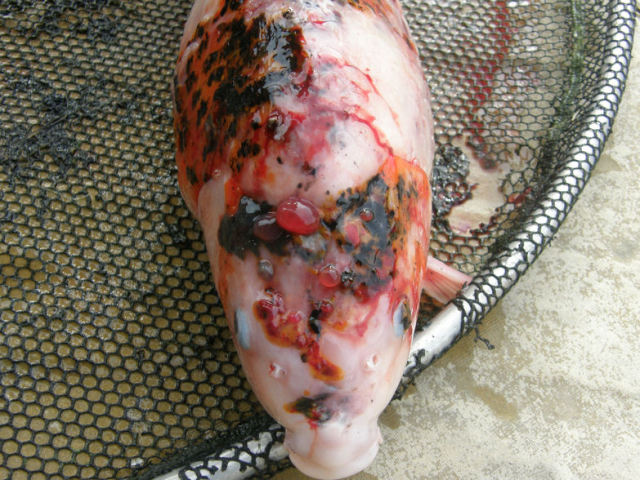 koi fish health
Question
picture of koi
I have been losing koi conti
koi fish health
Question
picture of koi
I have been losing koi conti
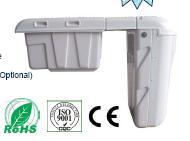 Backyard Pond
QuestionOur pond is small, yet large enough to clean up
Backyard Pond
QuestionOur pond is small, yet large enough to clean up
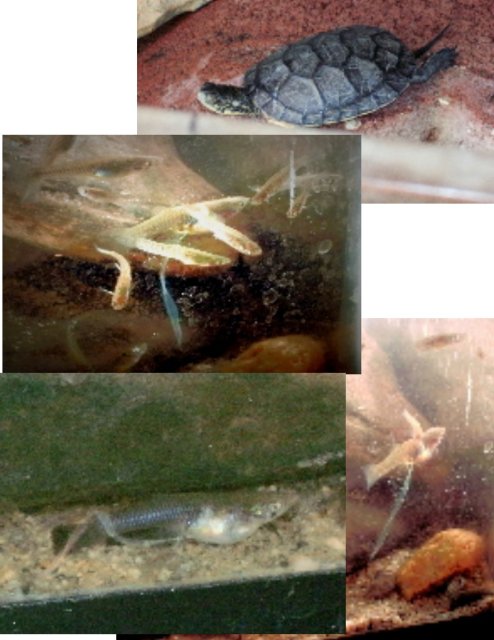 What is coming out of this fish?
Question
turt..fish
Thank you in advance for your time.
What is coming out of this fish?
Question
turt..fish
Thank you in advance for your time.